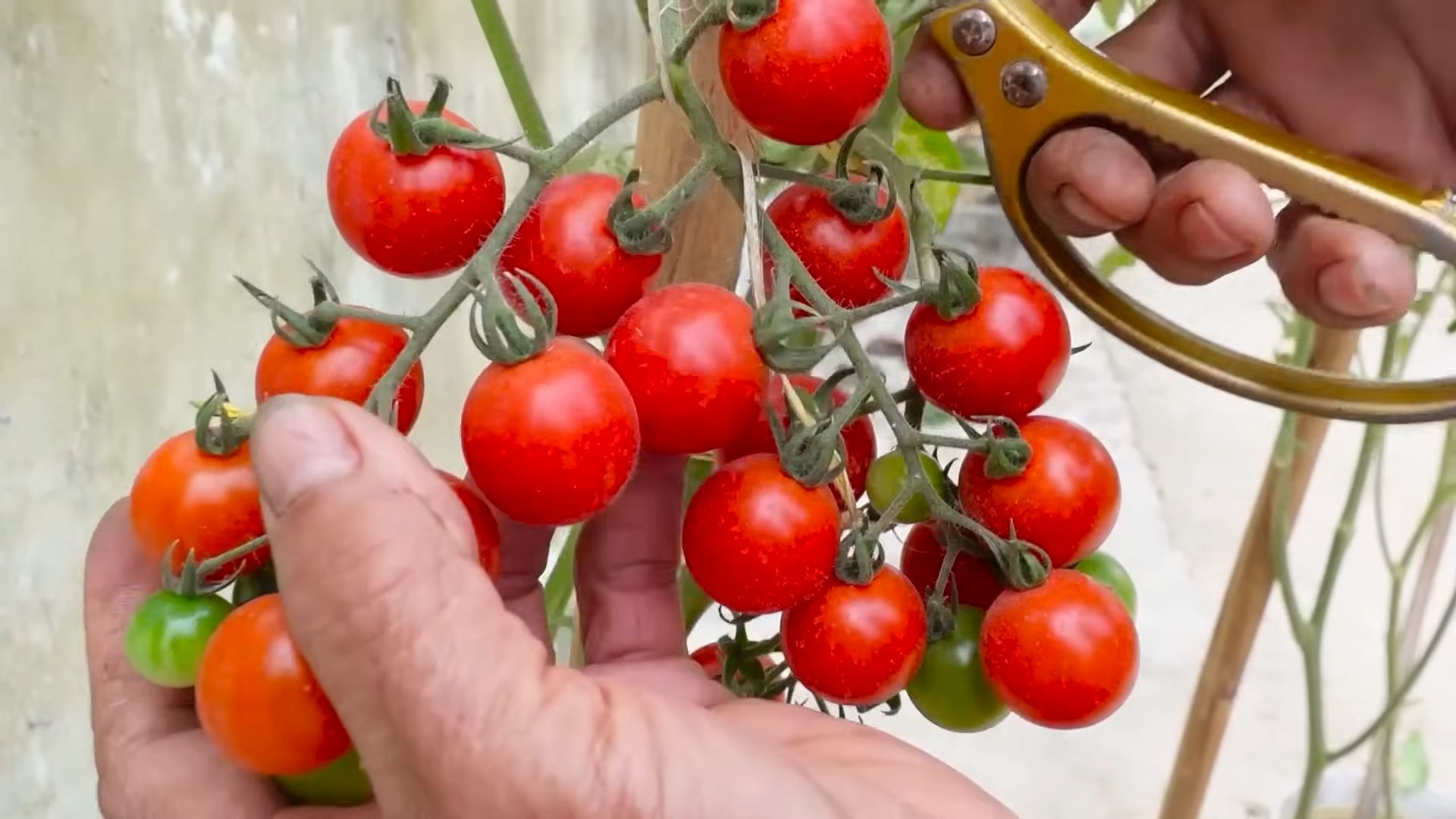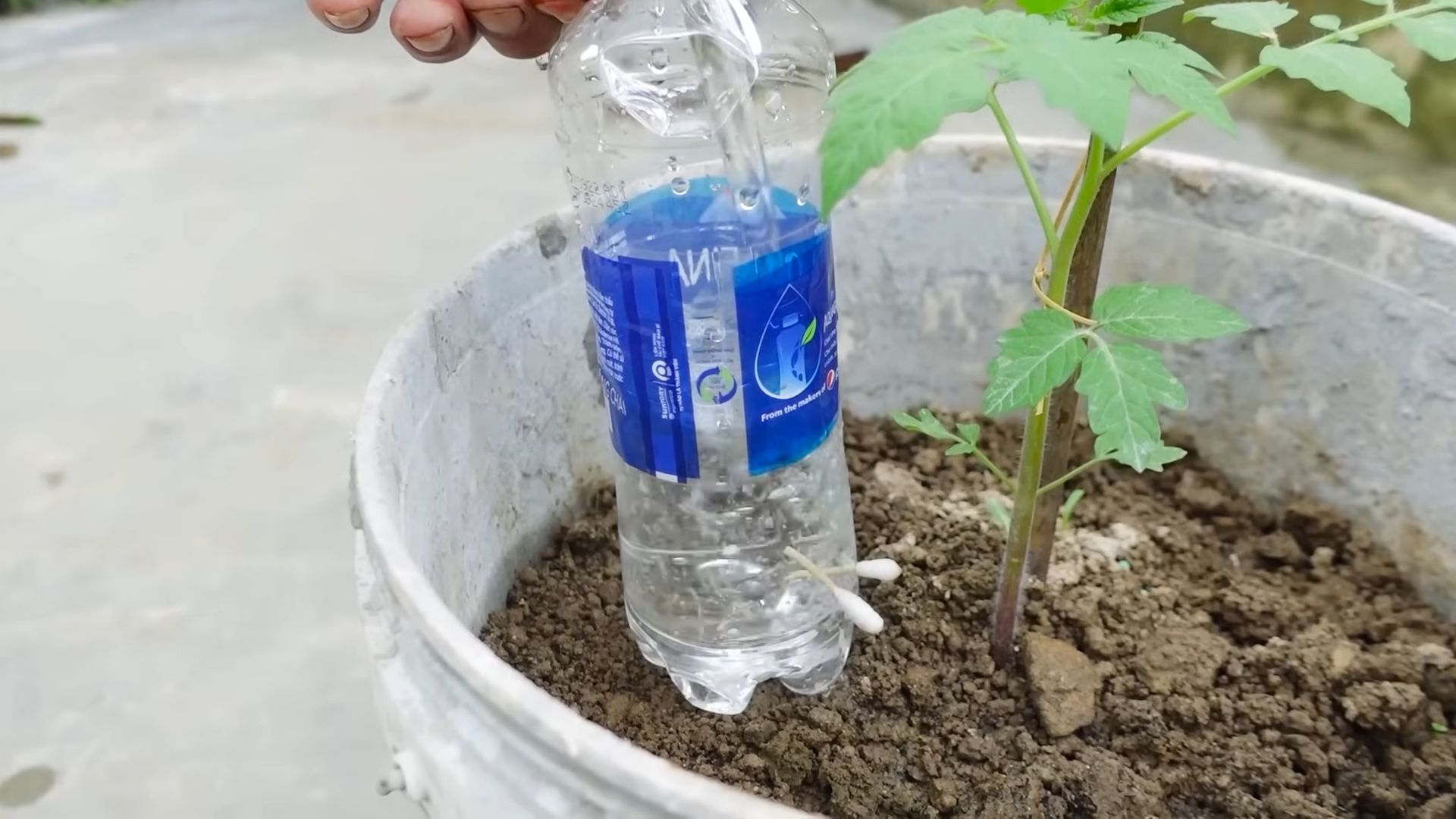Grape Tomato Planting Guide: Your Path to a Bountiful Harvest!
Have you ever dreamed of plucking sweet, juicy grape tomatoes straight from your own backyard? Imagine the burst of flavor in your salads, the perfect pop of color on your appetizer platters, all thanks to your own green thumb! This isn’t just a dream; it’s an achievable reality with the right knowledge. For centuries, cultivating tomatoes, in all their varieties, has been a cherished tradition, dating back to the Aztecs and Incas who first domesticated these vibrant fruits. Today, we’re bringing that tradition to your home with a simple, yet comprehensive grape tomato planting guide.
In today’s fast-paced world, finding moments of peace and connection with nature can be a challenge. That’s where home gardening comes in! Growing your own grape tomatoes isn’t just about having fresh produce; it’s about the joy of nurturing life, the satisfaction of watching your plants thrive, and the delicious reward of a homegrown harvest. Plus, let’s be honest, store-bought tomatoes just can’t compare to the taste of a sun-ripened, vine-fresh grape tomato. I’m here to show you how easy it is to get started, even if you’re a complete beginner. This grape tomato planting guide will equip you with all the essential tips and tricks you need to succeed, from choosing the right variety to troubleshooting common problems. Let’s get growing!

DIY: Grow Your Own Bountiful Grape Tomato Harvest!
Hey there, fellow gardening enthusiasts! I’m so excited to share my tried-and-true method for growing delicious, juicy grape tomatoes right in your own backyard (or even on your balcony!). Trust me, there’s nothing quite like the taste of a sun-ripened tomato you’ve nurtured yourself. This guide will walk you through every step, from choosing the right variety to harvesting your bumper crop. Let’s get started!
Choosing the Right Grape Tomato Variety
Before we even think about getting our hands dirty, let’s talk about tomato varieties. Grape tomatoes are generally easy to grow, but some are more resistant to diseases or better suited to specific climates. Here’s what I consider:
* Disease Resistance: Look for varieties labeled with resistance to common tomato diseases like Fusarium wilt (F), Verticillium wilt (V), and Tomato Mosaic Virus (ToMV). This will save you a lot of headaches later on.
* Growth Habit: Grape tomatoes can be determinate (bush-like) or indeterminate (vining). Determinate varieties grow to a certain size and then stop, producing most of their fruit at once. Indeterminate varieties keep growing and producing fruit throughout the season. I usually prefer indeterminate varieties for a longer harvest.
* Taste Preference: Of course, taste is subjective! Some grape tomatoes are sweeter, while others are more tangy. Do a little research and see what appeals to you. Some popular and reliable choices include:
* ‘Sungold’: Incredibly sweet and flavorful, a golden-orange variety.
* ‘Sweet Million’: A prolific producer of small, sweet red tomatoes.
* ‘Juliet’: A slightly larger, more oblong grape tomato with a classic tomato flavor.
* ‘Black Pearl’: A unique, dark-colored grape tomato with a rich, complex flavor.
* Climate Considerations: If you live in a cooler climate, choose varieties that mature earlier in the season. If you live in a hot climate, look for varieties that are heat-tolerant.
Getting Started: Seed Starting or Seedlings?
You have two main options for starting your grape tomato plants: starting from seed indoors or buying seedlings from a nursery. Both have their pros and cons.
* Starting from Seed: This gives you more control over the variety and can be more cost-effective. However, it requires more time and effort, and you’ll need to provide the right conditions for germination and growth.
* Buying Seedlings: This is the easier option, especially for beginners. You can skip the seed-starting process and get a head start on the growing season. Just make sure to choose healthy, vigorous seedlings with no signs of disease or pests.
I personally like to start some of my tomatoes from seed and buy some seedlings, just to have a mix.
Section 1: Starting from Seed (If You Choose This Route)
If you’re feeling adventurous and want to start your grape tomatoes from seed, here’s how I do it:
1. Gather Your Supplies: You’ll need:
* Tomato seeds (of your chosen variety)
* Seed starting trays or small pots
* Seed starting mix (a sterile, lightweight soil mix)
* A spray bottle filled with water
* A heat mat (optional, but helpful)
* A grow light (optional, but highly recommended)
2. Sow the Seeds: Fill your seed starting trays or pots with seed starting mix. Moisten the mix with the spray bottle. Sow the seeds about 1/4 inch deep, placing 2-3 seeds per cell or pot. Gently cover the seeds with more mix.
3. Provide Warmth and Moisture: Place the trays or pots on a heat mat (if using) and cover them with a clear plastic dome or plastic wrap to create a humid environment. Keep the mix consistently moist, but not soggy.
4. Wait for Germination: Germination usually takes 5-10 days. Once the seedlings emerge, remove the plastic dome or wrap and place the trays or pots under a grow light. If you don’t have a grow light, place them in a sunny window, but be aware that they may become leggy (tall and spindly) if they don’t get enough light.
5. Thin the Seedlings: Once the seedlings have their first true leaves (the second set of leaves that appear after the initial seed leaves), thin them to one seedling per cell or pot. Choose the strongest, healthiest seedling and snip off the others at the soil line.
6. Harden Off the Seedlings: Before transplanting the seedlings outdoors, you need to “harden them off” to acclimate them to the outdoor environment. This involves gradually exposing them to increasing amounts of sunlight and wind over a period of 7-10 days. Start by placing them outdoors in a sheltered location for an hour or two each day, gradually increasing the time and exposure.
Section 2: Preparing the Planting Site
Whether you’re using seedlings you started yourself or bought from a nursery, proper site preparation is crucial for a successful grape tomato harvest.
1. Choose a Sunny Location: Grape tomatoes need at least 6-8 hours of direct sunlight per day. Choose a location that gets plenty of sun.
2. Prepare the Soil: Grape tomatoes prefer well-drained soil that is rich in organic matter. Amend the soil with compost, aged manure, or other organic materials to improve its fertility and drainage. I like to add a generous amount of compost to my tomato beds.
3. Check the Soil pH: Grape tomatoes prefer a soil pH of 6.0-6.8. You can test your soil pH with a soil testing kit. If the pH is too low (acidic), add lime to raise it. If the pH is too high (alkaline), add sulfur to lower it.
4. Consider Raised Beds or Containers: If your soil is poor or poorly drained, consider growing your grape tomatoes in raised beds or containers. This will give you more control over the soil quality and drainage.
Section 3: Planting Your Grape Tomato Plants
Now for the fun part – getting those plants in the ground!
1. Wait for Warm Weather: Don’t plant your grape tomato plants outdoors until the danger of frost has passed and the soil has warmed up to at least 60°F (15°C).
2. Dig the Holes: Dig holes that are slightly larger than the root balls of your seedlings. Space the plants about 2-3 feet apart, depending on the variety. Determinate varieties can be planted closer together than indeterminate varieties.
3. Plant the Seedlings: Gently remove the seedlings from their pots or trays. If the roots are pot-bound (tightly circling the root ball), gently loosen them before planting. Place the seedlings in the holes and backfill with soil.
4. Bury the Stem (Optional, but Recommended): For extra root development, you can bury the bottom part of the stem when you plant. Remove the lower leaves and plant the seedling deeper than it was in the pot, burying the stem up to the first set of leaves. This will encourage the plant to develop more roots along the buried stem, resulting in a stronger, more productive plant.
5. Water Thoroughly: Water the newly planted seedlings thoroughly to settle the soil around the roots.
6. Add Mulch: Apply a layer of mulch around the plants to help retain moisture, suppress weeds, and regulate soil temperature. I like to use straw, shredded leaves, or wood chips.
Section 4: Providing Support: Staking, Caging, or Trellising
Grape tomato plants, especially indeterminate varieties, need support to keep them off the ground and prevent the fruit from rotting. Here are a few options:
* Staking: Drive a sturdy stake into the ground near each plant and tie the main stem to the stake with soft twine or plant ties. As the plant grows, continue to tie it to the stake.
* Caging: Place a tomato cage around each plant. The cage will support the plant as it grows.
* Trellising: Use a trellis system to support the plants. This is a good option for larger gardens.
I personally prefer using cages because they provide good support and are relatively easy to set up.
Section 5: Watering and Fertilizing
Proper watering and fertilization are essential for healthy grape tomato plants and a bountiful harvest.
1. Water Regularly: Water your grape tomato plants deeply and regularly, especially during hot, dry weather. Aim to keep the soil consistently moist, but not soggy. Water at the base of the plants to avoid wetting the foliage, which can lead to disease.
2. Fertilize Regularly: Grape tomatoes are heavy feeders and need regular fertilization. Use a balanced fertilizer (e.g., 10-10-10) or a tomato-specific fertilizer according to the package directions. Fertilize every 2-3 weeks throughout the growing season. I

Conclusion
So, there you have it! This DIY grape tomato planting guide isn’t just another gardening tip; it’s your secret weapon to a bountiful harvest of sweet, juicy grape tomatoes right in your own backyard (or balcony!). We’ve walked you through everything from selecting the perfect spot and preparing the soil to nurturing your seedlings and providing essential support. The beauty of this method lies in its simplicity and adaptability. Whether you’re a seasoned gardener or a complete beginner, you can easily implement these steps and witness the magic of growing your own food.
Why is this DIY trick a must-try? Because it empowers you to take control of your food source, ensuring you have access to fresh, healthy, and delicious grape tomatoes whenever you crave them. Store-bought tomatoes simply can’t compare to the flavor explosion of a homegrown variety, ripened to perfection under the sun. Plus, you’ll be reducing your carbon footprint by eliminating the need for transportation and packaging. It’s a win-win for you and the environment!
But the fun doesn’t stop there! Feel free to experiment with different varieties of grape tomatoes. Try growing yellow grape tomatoes for a sweeter, milder flavor, or opt for a red variety known for its disease resistance. You can also explore companion planting by interspersing basil, marigolds, or other herbs and flowers among your tomato plants. These companions can help deter pests, attract pollinators, and even improve the flavor of your tomatoes. Consider adding a trellis or tomato cage for vertical growth, maximizing space and sunlight exposure.
Don’t be afraid to get your hands dirty and personalize your grape tomato planting experience. The most important thing is to have fun and learn along the way. Gardening is a journey, not a destination, and every season brings new opportunities for growth and discovery.
We are confident that this guide will set you on the path to success. Now, it’s your turn to put these tips into action. Plant those seeds, nurture those seedlings, and watch your grape tomato plants thrive. And most importantly, don’t forget to share your experience with us! We’d love to hear about your successes, challenges, and any variations you’ve tried. Share your photos and stories on social media using #DIYGrapeTomatoes or leave a comment below. Let’s build a community of passionate gardeners and inspire others to grow their own food. Happy planting!
Frequently Asked Questions (FAQ)
What is the best time to plant grape tomatoes?
The ideal time to plant grape tomatoes depends on your local climate. Generally, you should plant them after the last expected frost in spring. Soil temperature should be consistently above 60°F (15°C). If you live in a warmer climate, you can start planting earlier, even late winter or early spring. For cooler climates, starting seeds indoors 6-8 weeks before the last frost is recommended to get a head start.
How much sunlight do grape tomatoes need?
Grape tomatoes thrive in full sun, requiring at least 6-8 hours of direct sunlight per day. Insufficient sunlight can lead to leggy plants, reduced fruit production, and less flavorful tomatoes. Choose a planting location that receives ample sunlight throughout the day. If you’re growing them in containers, you can move them around to maximize sun exposure.
What kind of soil is best for grape tomatoes?
Grape tomatoes prefer well-draining, fertile soil with a slightly acidic pH (6.0-6.8). Amend your soil with compost or other organic matter to improve drainage, fertility, and water retention. Avoid heavy clay soils, as they can become waterlogged and hinder root growth. A raised garden bed or container filled with a high-quality potting mix is an excellent option if your native soil is poor.
How often should I water grape tomatoes?
Water grape tomatoes deeply and regularly, especially during hot, dry weather. Aim to keep the soil consistently moist but not waterlogged. Water at the base of the plant to avoid wetting the foliage, which can increase the risk of fungal diseases. Mulching around the plants can help retain moisture and suppress weeds. As a general rule, water deeply once or twice a week, or more frequently if the soil dries out quickly.
What are some common pests and diseases that affect grape tomatoes?
Grape tomatoes can be susceptible to various pests and diseases, including aphids, whiteflies, tomato hornworms, blossom end rot, early blight, and late blight. Regularly inspect your plants for signs of infestation or disease. Use organic pest control methods, such as insecticidal soap or neem oil, to manage pests. Ensure good air circulation around the plants to prevent fungal diseases. Remove any infected leaves or fruit promptly. Consider planting disease-resistant varieties to minimize the risk of disease.
How do I prevent blossom end rot in grape tomatoes?
Blossom end rot is a common problem in tomatoes caused by calcium deficiency. It appears as a dark, leathery spot on the bottom of the fruit. To prevent blossom end rot, ensure your soil has adequate calcium levels. Amend your soil with lime or bone meal before planting. Water consistently to maintain even soil moisture, as fluctuations in moisture can interfere with calcium uptake. Avoid over-fertilizing with nitrogen, as this can also contribute to calcium deficiency.
When should I harvest grape tomatoes?
Grape tomatoes are ready to harvest when they are fully colored, firm to the touch, and easily detach from the vine. The color will vary depending on the variety, but generally, they should be a deep red, yellow, or orange. Taste a few tomatoes to ensure they are ripe and flavorful. Harvest regularly to encourage continued fruit production.
Can I grow grape tomatoes in containers?
Yes, grape tomatoes are well-suited for container gardening. Choose a large container (at least 12 inches in diameter) with drainage holes. Use a high-quality potting mix and provide adequate support for the plants, such as a stake or cage. Water and fertilize regularly, as container-grown plants tend to dry out and deplete nutrients more quickly than those grown in the ground.
What are some good companion plants for grape tomatoes?
Several plants can benefit grape tomatoes when planted nearby. Basil is a classic companion plant that repels pests and improves the flavor of tomatoes. Marigolds also deter pests, such as nematodes. Other beneficial companion plants include onions, garlic, carrots, and parsley. Avoid planting tomatoes near brassicas (e.g., cabbage, broccoli) or fennel, as they can inhibit growth.
How do I prune grape tomato plants?
Pruning grape tomato plants can improve air circulation, reduce disease risk, and encourage fruit production. Remove suckers (the small shoots that grow between the main stem and branches) to direct the plant’s energy towards fruit development. You can also remove any yellowing or diseased leaves. Prune regularly throughout the growing season to maintain a healthy and productive plant.
How do I store grape tomatoes after harvesting?
Store grape tomatoes at room temperature for the best flavor. Refrigerating them can dull their taste and texture. If you have a large harvest, you can preserve grape tomatoes by canning, freezing, or drying them. They can also be used to make sauces, salsas, and other tomato-based products.
How can I improve the flavor of my grape tomatoes?
Several factors can influence the flavor of grape tomatoes, including sunlight, soil fertility, and watering practices. Ensure your plants receive ample sunlight and are grown in fertile, well-draining soil. Water consistently and avoid over-fertilizing. Allowing the tomatoes to ripen fully on the vine will also enhance their flavor. Some gardeners believe that stressing the plants slightly by withholding water a few days before harvest can concentrate the sugars and improve the taste.





Leave a Comment